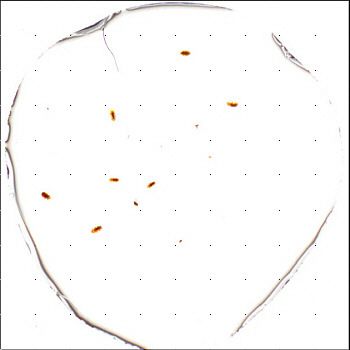Scientists have labeled Tardigrades, also known as “Water Bears,” as fascinating microscopic animals that have been around for over 600 million years. These tiny creatures are essentially immortal and have a unique ability to withstand extreme conditions that would instantly kill any other living organism.

Tardigrades are only about 0.002mm long, but they have a remarkable ability to survive in a wide range of environments. Scientists have found tardigrades capable of surviving exposure to space radiation, boiling water, absolute zero temperatures, volcanic pressure and even being shot out of a gun at over 2,000 mph.
Scientists and researchers theorize the only real extinction of the Tardigrades will be the death of our Sun.
The secret to their survival lies in their unique biological mechanisms, which allow them to enter a state of tun (a very deep hibernation-like state) when exposed to harsh environments. In this state, they can survive for decades or even centuries without food or water, and once conditions become favorable again, they can “come back to life” as if nothing happened.
During tun, the Tardigrades undergo physiological changes such as leg retraction, slowed metabolism and dehydration. Despite extensive research, scientists are still unsure about the exact reasons behind these actions. To gain a deeper understanding, they have exposed the Tardigrades in an experiment to various harsh conditions.
In these experiments, Tardigrades were subjected to multiple variables that would be considered deadly to the human body such as baths of hydrogen peroxide, boiling water, salt suffocation and temperatures of minus 112 degrees Fahrenheit.
Scientists noticed that when the Tardigrades’ bodies reacted to stress, the microscropic organism began creating free radicals, (a radical, also known as a free radical, is an atom, molecule or ion that has at least one unpaired valence electron.)
Due to their high reactivity, free radicals will destabilize other proteins and DNA segments when they try to resolve their added negative charge to even out the lonely electron. Scientists were able to track the free radicals to an amino acid (protein code) in the Tardigrade’s bodies to Cysteine, which helps with organism’s brain development.
While this was a major discovery, scientists were not entirely correct. They soon found out that Cysteine played a role in Tardigrades’ lives, but not in the way they thought.
Tardigrades do not rely on a flight or fight system based on the senses. Instead, they have a unique molecular stress sensor that is entirely capable of producing Cysteine.
These studies have revealed that Tardigrades’ survival strategies are heavily dependent on Cysteine, which plays an impactful role beyond their well-known ability to enter tun. For instance, blocking the free radicals from oxidizing Cysteine makes it difficult for water bears to survive freezing temperatures.
It is now known that Tardigrades have the ability to start and stop their metabolic state and activities.
This discovery of Cysteine and survival has opened a new and unbelievable world for scientists and researchers. Scientists say that their new work has shown that one day long-term space travel would be possible as well as the new understanding of cryptobiosis, (metabolic state in extremophilic organisms in response to adverse environmental conditions such as desiccation, freezing, and oxygen deficiency. In the cryptobiotic state, all measurable metabolic processes stop, preventing reproduction, development, and repair).
Scientists are actively studying Tardigrades to learn more about their unique biological mechanisms and how they can be applied to other organisms. The potential applications of this research could be far-reaching, from developing new medical treatments to improving the resilience of crops to extreme weather conditions.
How to find Nebraskan Tardigrades near you:
You might be wondering, am I able to find these extremely tiny creatures for myself? The answer is yes! Taridgrades are found almost everywhere, yes that means “flat land-boring” Nebraska.
According to Nebraskaland, here’s a quick and simple way to find to find local Tardigrades.
1. Collect moss and materials
Since Tardigrades love to soak up moist environments, your best bet to find them is in a wet and mossy area. Collect a few pieces of moss around the size of a nickel. For some extra scientific fun, try to find dried-up moss or other similar plants to compare the vast environments of organisms.
You will need a “mega-zoom” camera lens phone attachment, water, a dish and moss.
2. Soak and squeeze
Soak your moss samples in freshwater or tap water for at least 20 minutes. After the moss has been soaked in water, squeeze the clumps to extract the water into a flat dish. Leave the water undisturbed for a few minutes until the dirt and debris settle at the bottom.
3. Look carefully and remember what you are looking for
Once the dirt has settled, observe the water in the dish closely. Since tardigrades are incredibly tiny, you will need magnifying tools to aid in your search. A magnifying glass or hand lens can be helpful, as well as a clip-on macro lens for your phone or tablet. It is also essential to have a good source of light, preferably from underneath a clear container holding the sample.
Now you have found Tardigrades!

















